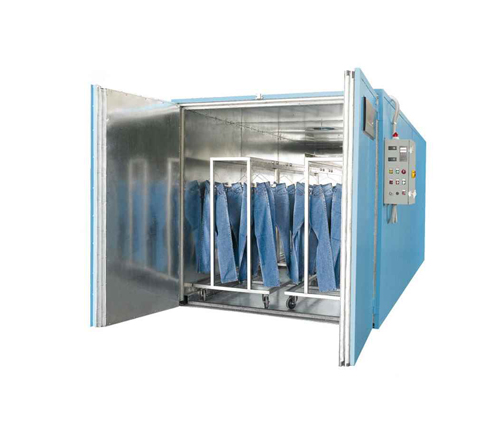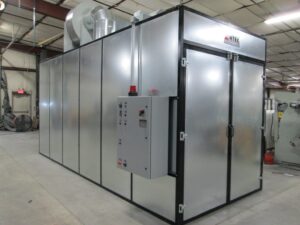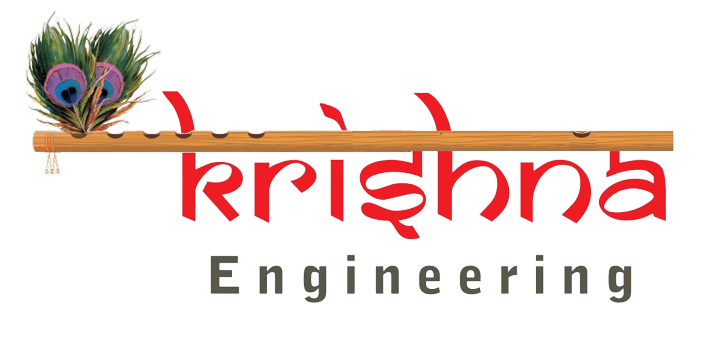What is a Garment curing oven?
An industrial curing oven is a piece of thermal processing equipment designed to improve the strength and durability of a material by accelerating a desirable chemical reaction. In its simplest format, a curing oven achieves this by elevating the temperature of a sample material to within or above a specific limit.

Here are some key features and considerations specific to garment curing ovens:
Conveyor System: Garment curing ovens often incorporate a conveyor system to transport the garments through the oven chamber. The conveyor belt or conveyor system allows for continuous processing of garments, ensuring uniform curing or drying.
Temperature Control: Garment curing ovens have temperature control systems to regulate and maintain the desired curing temperature. They typically include digital or analog temperature controllers, thermocouples or temperature sensors, and heating elements such as electric heaters or gas burners. The temperature range depends on the specific curing or drying requirements of the textiles or garments.
Air Circulation: Garment curing ovens utilize air circulation to ensure even heat distribution throughout the oven chamber. Fans or blowers are used to circulate heated air, providing uniform curing or drying across the garments. Adequate air circulation helps prevent the formation of hot spots and ensures consistent results.
Conveyor Speed Control: The conveyor speed of a garment curing oven can usually be adjusted to control the dwell time or curing duration of the garments in the oven. This allows for precise control over the curing or drying process and ensures optimal results.
Exhaust System: Garment curing ovens often include exhaust systems to remove fumes, vapors, or byproducts generated during the curing process. Proper ventilation helps maintain a clean working environment, removes odors or volatile substances, and minimizes the accumulation of contaminants.
Safety Features: Garment curing ovens incorporate safety features to ensure operator safety and prevent accidents. These may include temperature limit controllers, safety interlocks, emergency shut-off systems, and appropriate ventilation or exhaust systems to handle any potentially hazardous substances or fumes.
Process Monitoring: Some garment curing ovens may include monitoring systems to track and record parameters such as temperature, conveyor speed, and curing time. These systems assist in quality control, ensuring that the curing process meets the desired specifications and results in consistent and durable finishes.
Garment curing ovens are used in textile printing, garment manufacturing, and other textile processing industries. They enable the curing or drying of inks, coatings, or finishes on textiles or garments, ensuring proper adhesion, colorfastness, and durability. These ovens offer controlled and efficient curing processes, enhancing productivity and quality in the textile and garment industry.
Worldwide Exports Location:
Following Countries: Afghanistan, Albania, Algeria, Andorra, Angola, Antigua And Barbuda, Argentina, Armenia, Australia, Austria, Azerbaijan, Bahamas, Bahrain, Bangladesh, Barbados, Belarus, Belgium, Belize, Benin, Bhutan, Bolivia, Bosnia And Herzegovina, Botswana, Brazil, Brunei, Bulgaria, Burkina Faso, Burundi, Cabo Verde, Cambodia, Cameroon, Canada, Central African Republic (CAR), Chad, Chile, Colombia, Comoros, Democratic Republic Of The Congo, Republic Of The Congo, Costa Rica, Cote D’Ivoire, Croatia, Cuba, Cyprus, Czech Republic, Denmark, Djibouti, Dominica, Dominican Republic, Ecuador, Egypt, El Salvador, Equatorial Guinea, Eritrea, Estonia, Ethiopia, Fiji, Finland, France, Gabon, Gambia, Georgia, Germany, Ghana, Greece, Grenada, Guatemala, Guinea, Guinea-Bissau, Guyana, Haiti, Honduras, Hungary, Iceland, India, Indonesia, Iran, Iraq, Ireland, Israel, Italy, Jamaica, Japan, Jordan, Kazakhstan, Kenya, Kiribati, Kosovo, Kuwait, Kyrgyzstan, Laos, Latvia, Lebanon, Lesotho, Liberia, Libya, Liechtenstein, Lithuania, Luxembourg, Macedonia (FYROM), Madagascar, Malawi, Malaysia, Maldives, Mali, Malta, Marshall Islands, Mauritania, Mauritius, Mexico, Micronesia, Moldova, Monaco, Mongolia, Montenegro, Morocco, Mozambique, Myanmar (Burma), Namibia, Nauru, Nepal, Netherlands, New Zealand, Nicaragua, Niger, Nigeria, North Korea, Norway, Oman, Pakistan, Palau, Palestine, Panama, Papua New Guinea, Paraguay, Peru, Philippines, Poland, Portugal, Qatar, Romania, Russia, Rwanda, Saint Kitts And Nevis, Saint Lucia, Saint Vincent And The Grenadines, Samoa, San Marino, Sao Tome And Principe, Saudi Arabia, Senegal, Serbia, Seychelles, Sierra Leone, Singapore, Slovakia, Slovenia, Solomon Islands, Somalia, South Africa, South Korea, South Sudan, Spain, Sri Lanka, Sudan, Suriname, Swaziland, Sweden, Switzerland, Syria, Taiwan, Tajikistan, Tanzania, Thailand, Timor-Leste, Togo, Tonga, Trinidad And Tobago, Tunisia, Turkey, Turkmenistan, Tuvalu, Uganda, Ukraine, United Arab Emirates (UAE), United Kingdom (UK), United States Of America (USA), Uruguay, Uzbekistan, Vanuatu, Vatican City (Holy See), Venezuela, Vietnam, Yemen, Zambia, Zimbabwe.
India Location –
Maharashtra, Mumbai, Pune, Nagpur, Nashik, Virar, Palghar, Aurangabad, Bhiwandi, Thane, Amravati, Malegaon, Kolhapur, Nanded, Sangli ,Jalgaon, Akola, Latur, Ahmadnagar, Dhule, Ichalkaranji, Chandrapur, Parbhani, Jalna, Bhusawal, Navi Mumbai, Raigad, Panvel, Bangalore, Karnataka, Ahmedabad, Gujarat, Chennai, Tamil Nadu, Surat, Coimbatore, Vadodara, Indore, Madhya Pradesh, Bhubaneswar, Orissa, Hyderabad, Andhra Pradesh, Jamshedpur, Jharkhand, Kolkata, West Bengal ,Delhi, Jaipur, Rajasthan, Kochi, Kerala, Chandigarh, Punjab, Dehradun, Uttarakhand , Lucknow, Uttar Pradesh, Visakhapatnam, Andhra Pradesh, Guwahati, Assam, Amritsar, Mangalore, Noida, Gurgaon, Haryana, Bhopal, Madhya Pradesh, Aurangabad, Faridabad, Allahabad, Prayagraj, Jodhpur.




